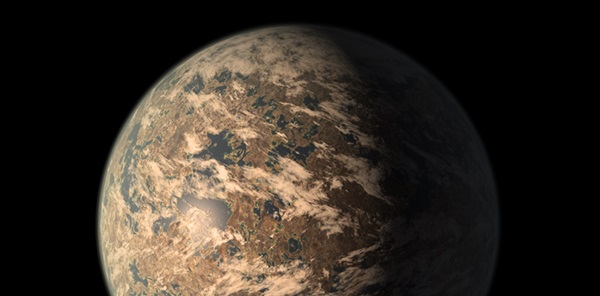NASA’s Remarkable Discovery: Evidence of an Oceanic Exoplanet with Potential for Life

NASA has set the scientific community and the world ablaze with its latest revelation—an exoplanet located light years away from Earth, exhibiting promising evidence of an expansive oceanic body and the potential for life. This groundbreaking discovery was made possible through the utilization of the James Webb Space Telescope, which has provided crucial insights into the enigmatic world known as K2-18 b, an exoplanet of staggering proportions, dwarfing our own planet by a factor of 8.6 in terms of mass. The investigation has yielded tantalizing evidence of the existence of carbon-rich compounds, including methane and carbon dioxide.
The significance of this discovery is further heightened by the recent classification of K2-18 b as a Hycean exoplanet, a category characterized by the intriguing prospect of hosting a hydrogen-rich atmosphere and a surface shrouded in vast oceanic waters.
K2-18 b comfortably resides within the habitable zone of its parent star, a cool dwarf star known as K2-18, situated approximately 120 light-years away within the Leo constellation. These exoplanets, which span the size spectrum between Earth and Neptune, represent uncharted territories beyond the confines of our solar system, eliciting ongoing scientific curiosity and inquiry into their unique attributes.
NASA’s official press release on this remarkable discovery highlighted, “The presence of methane and carbon dioxide, coupled with the absence of ammonia, lends further credence to the theory of an underwater world enveloped by a hydrogen-rich atmosphere on K2-18 b. Preliminary observations from the Webb telescope also raise the possibility of detecting dimethyl sulphide (DMS), a molecule exclusively generated by life on Earth, primarily emitted by phytoplankton in marine environments.”
Leading astronomer Nikku Madhusudhan from the University of Cambridge, who served as the principal author of the study, shared his insights, stating, “Our findings underscore the critical importance of exploring diverse habitable environments in the quest for extraterrestrial life. Historically, the search for life beyond our planet has been fixated on small rocky worlds, but the larger Hycean domains offer significantly more favourable conditions for atmospheric analysis.”
The exoplanet K2-18 b first captured the attention of scientists back in 2015, thanks to NASA’s K2 mission. However, the recent deployment of the James Webb Space Telescope, with its advanced capabilities, has provided scientists with the unprecedented opportunity to conduct an in-depth exploration of this exoplanet—a world that orbits a star situated far beyond the confines of our solar system.
The groundbreaking discovery of an oceanic exoplanet brimming with potential for life has opened up exciting new avenues for astrobiology and the broader field of astronomy. The tantalizing presence of carbon-rich compounds, methane, and carbon dioxide, coupled with the absence of ammonia, suggests an environment conducive to the development of life.
The concept of Hycean exoplanets, which encompasses the possibility of hydrogen-rich atmospheres and vast surface oceans, challenges our previous assumptions about habitable environments and the potential for life beyond Earth. It underscores the need for astronomers and scientists to explore a diverse range of habitable conditions in their quest to uncover extraterrestrial life.
As we continue to delve into the mysteries of the universe, the discovery of K2-18 b and its potential as a haven for life serves as a powerful reminder of the limitless wonders that lie beyond our own celestial neighborhood. With cutting-edge technology and scientific exploration, we inch closer to answering one of humanity’s most profound questions: are we alone in the cosmos?






